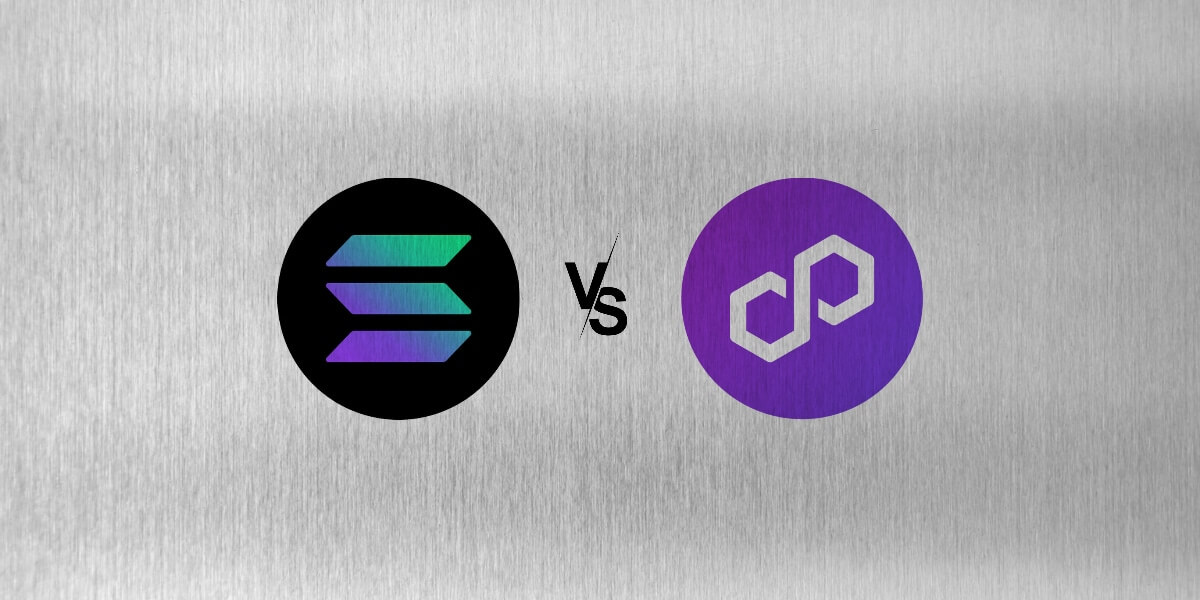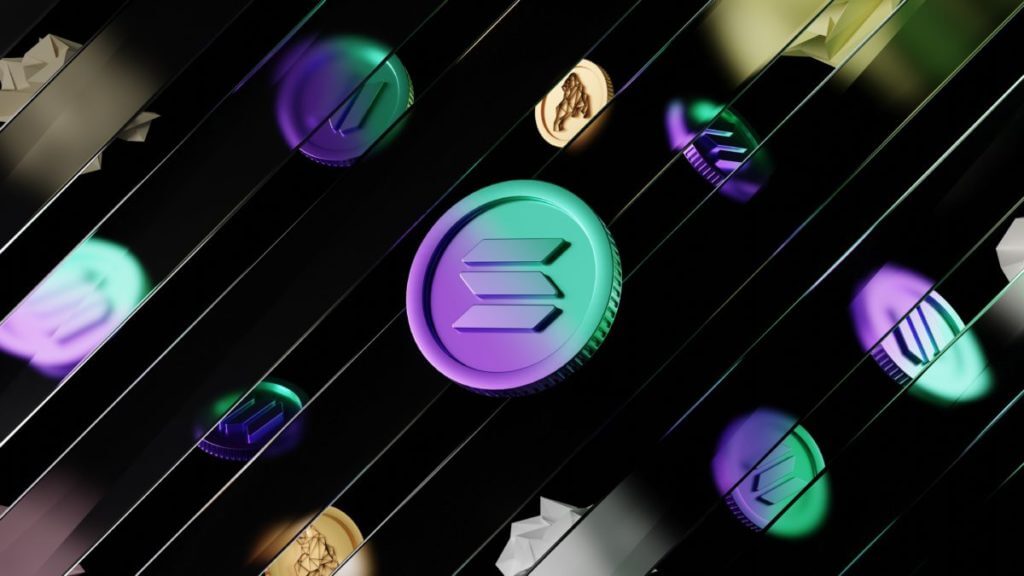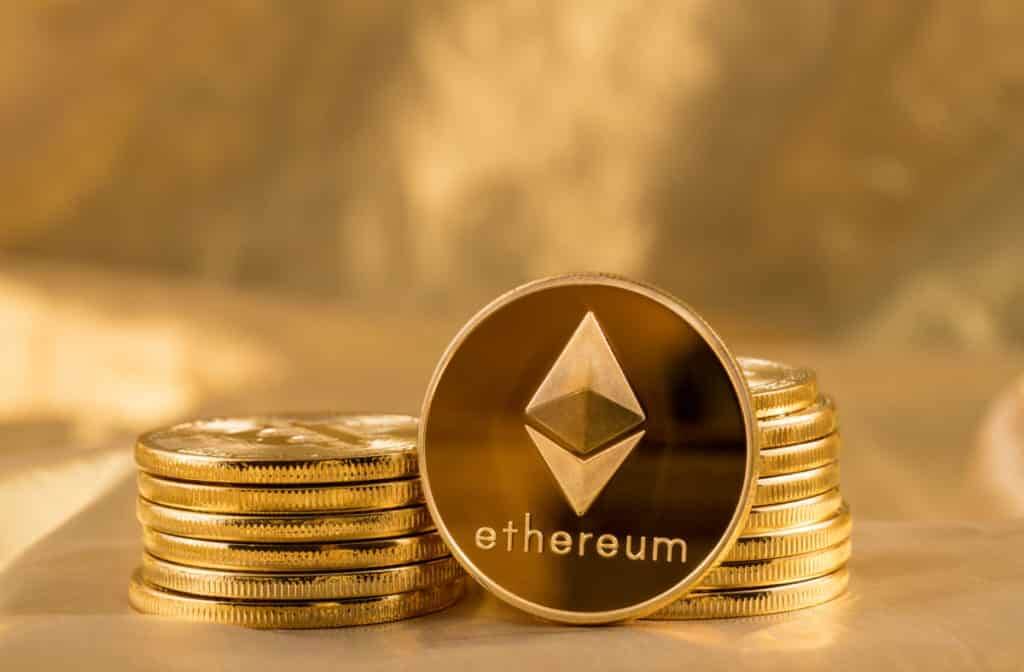
Solana vs Polygon – Side-by-side comparison
Solana vs Polygon, which is better regarding speed and number of transactions, application, and community adoption, user experience?
Polygon and Solana are part of the new wave of blockchain technologies that offer innovative solutions to overcome the challenges of the blockchain trilemma, allowing for the creation of decentralized, secure, and scalable Web3 applications. Nonetheless, distinguishing between these two platforms could be puzzling for inexperienced investors. Let’s look in detail at their performances and features.
Solana vs Polygon – general overview
Polygon network
Not taken seriously at the time of its launch, the Polygon blockchain has become essential in the Web3 ecosystem. Since the beginning of 2022, large companies have used this protocol to launch their project there. Until dethroning Ethereum?
In February 2023, the world of Ethereum layers-2 was in turmoil. The American exchange platform Coinbase has launched its Base protocol and entered the battle of layers-2. A case that we will follow closely.
a secondary layer has already taken off: Polygon. The project born in India in 2017, Polygon, made people talk about it in its infancy but without creating value.
Everything changed in 2021. MATIC Network is renamed Polygon (the token’s name remains MATIC), and the founders raise more than 450 million dollars from renowned investors seduced by the roadmap. And they don’t seem to have been wrong, given the recent successes of Polygon, to the point of wondering if this new ecosystem is a real threat to the giant Ethereum.
MATIC price prediction

MATIC Network was born in 2017, the first protocol openly addressing a scalability solution for Ethereum. The Indian project then clearly identifies what is lacking in Ethereum: gas fees that are too high and validation times that are too long. There is, therefore, a real need, and the technique used is consistent. But MATIC Network does not take off.
In 2019, Polygon introduced its own token, MATIC, with a starting price of $0.00263. During the bullish market in December 2021, the token reached its all-time high of $2.8. Within three years, MATIC has emerged as one of the top 10 cryptocurrencies, boasting a substantial market cap. The token has sustained its rapid growth, surging by 73% since the beginning of 2023. Successful partnerships with major brands, including Adobe, Starbucks, Adidas, Prada, Meta, Reddit, and Stripe have largely driven this impressive increase in value.
Solana blockchain
Solana is a blockchain considered the main rival of Ethereum. It is the first blockchain to adopt the “proof-of-history” (PoH) validation system, allowing faster transaction processing and lower transaction fees.
In southern California, San Diego County is the small coastal town of Solana Beach. Inspired by this piece of paradise, developer Anatoly Yakovenko started creating his Solana blockchain in 2017 and launched it in March 2020.
The former Qualcomm framework designed this blockchain to work similarly to Ethereum but with improvements. This innovative blockchain has quickly become popular and has climbed into the top 10 cryptocurrencies.
Solana is a highly functional open-source project implementing a new high-speed, permissionless layer-1 blockchain. Its goal is to offer higher throughput than other popular blockchains while keeping costs as low as possible.
The Solana blockchain offers a fast and scalable platform for blockchain developers to build applications, despite its technical challenges. Solana utilizes a series of consensus algorithms on its blockchain network to achieve maximum scalability, resulting in transaction throughput scaling following network capacity.
Its innovative hybrid consensus model combines a unique PoH (proof-of-history) algorithm and an extremely fast synchronization engine based on proof-of-stake (PoS). This is what allows the Solana network to process more than 710,000 transactions per second without the need for a scaling solution.
Solana’s third-generation blockchain architecture is designed to facilitate the creation of smart contracts and decentralized applications (DApps). This project supports various decentralized finance (DeFi) platforms and NFT marketplaces.
Funded during the ICO (initial coin offerings) “boom” of 2017, the blockchain was tested through multiple phases before the official launch of the mainnet in 2020.
Solana price prediction

In March 2020, Solana (SOL) introduced its native token in a sale for $0.22. The token gained significant popularity and reached an all-time high of $259 in November 2021 during the Solana NFT boom. However, the momentum was short-lived, and the token saw a low of approximately $8 due to the market crash. The collapse of FTX had a significant impact on the SOL price, and the network’s inability to stay up 24/7 resulted in a decline in users. As a consequence, the SOL price suffered. Moreover, Solana’s technical flaws caused a 20-hour outage on February 27, 2023, further affecting the network’s reputation and value.
Solana vs Polygon NFTs
Although both blockchains have the technical capacity to support the creation of NFTs through fast transactions, Solana’s periodic network disruptions have resulted in many startups and projects shifting to Polygon. Despite being considered the leading NFT blockchain network last summer, Solana must address its technical problems to maintain its dominance during the next bullish phase for SOL.
Adidas, Meta, Starbucks, Disney, and Reddit. A priori, the only relationship between these companies is their American nationality. But another: they all launched a Web3 project by deploying it on Polygon. The trend that started in 2022 in favor of the protocol continues to intensify.
Very quickly, many noticed that it was on the NFT’s side that the Polygon solution could be damn useful. It had two major advantages. The first, already discussed, is to be faster and less expensive. The second is to use the proof-of-stake validation consensus.
However, during the NFT craze of 2020-2021, Ethereum was still using proof of work and was, therefore, 100 times more energy intensive than today. For some major brands interested in NFTs, there was no question of getting started if their image would suffer. Polygon was the ideal solution for launching NFTs while consuming 100 times less energy. Today, even though the Ethereum based blockchain has moved to PoS, Polygon still enjoys an excellent image.
Starbucks, therefore, used Polygon to launch its NFT loyalty program called Starbucks Odyssey. Instagram (Meta) will offer NFT trading through Polygon, an option also chosen by Redd
it. Adidas will build an NFT marketplace on Polygon. Disney has gone further, partnering with Polygon to develop their Web3 projects.

Polygon vs Solana vs Ethereum
Solana vs. Ethereum
Solana often receives praise for its speed and high performance. It is even considered a legitimate rival for industry leaders like Ethereum.
Regarding processing speed, Solana can challenge Ethereum with an estimated maximum speed of over 50,000 transactions per second TPS. The different consensus algorithms used allow for faster transaction confirmation, and this feature makes Solana one of the fastest blockchains.
In comparison, Ethereum’s old “proof-of-work” model could only support 15 transactions per second. Solana is, therefore, several thousand times faster and has the advantage of a reduced cost thanks to implementing new “tokenomics” at a lower cost.
The Solana blockchain technology is much more ecological and sustainable than other PoS blockchains. This is a strong point against Ethereum, whose PoW model requires phenomenal computing power.
However, following The Merge, Ethereum now uses PoS. Ethereum 2.0 can therefore compete with Solana in terms of productivity, scalability, energy consumption, and transaction costs.
Can the Polygon protocol overshadow Ethereum?

The power acquired by Polygon and the number of large-scale projects that are embarking on it leave one question unanswered: Is Ethereum a threatened ecosystem? The short answer is negative, but the question remains open. First, even if the project has grown well, it remains intrinsically linked to Ethereum as a scalability solution. While the sidechain can theoretically be used with all protocols, most projects use it as a sidechain to Ethereum. In other words, Polygon remains very dependent on Ethereum.
In addition, Polygon’s communication has strongly pivoted since 2021. While MATIC Network saw Ethereum as an opponent to be beaten, the name change to Polygon has also softened the discourse to make Ethereum a key development partner from one to the other. Polygon therefore no longer sees itself as an Ethereum killer.
Finally, Ethereum’s reputation is out of all proportion to that of Polygon. The transition to PoS consensus has also brought many companies closer to the ecosystem created by Vitalik Buterin, which still has a bright future ahead. In a world where Web3 is developing increasingly, it is, therefore, quite possible that Polygon and Ethereum will coexist smoothly.
Solana vs Polygon – Verdict
Deciding between Polygon Crypto and Solana depends on what you prioritize. Polygon allows for a much more inclusive means of interacting with the Ethereum network, while Solana offers great affordability and scalability. If you require maximum functionality, Solana is a top choice. However, Polygon is the better option if you value compatibility, a large community base, and access to popular crypto apps.




